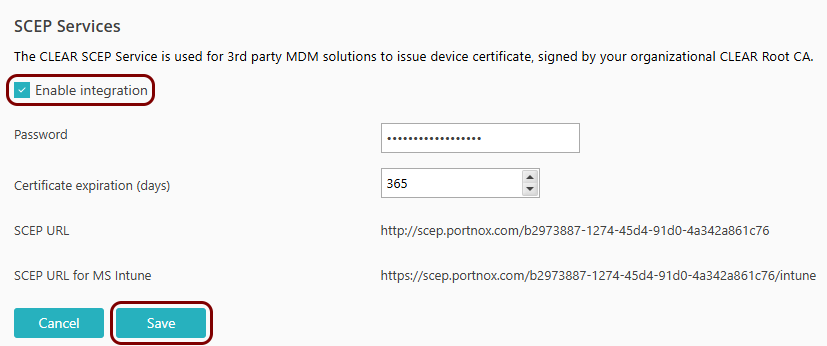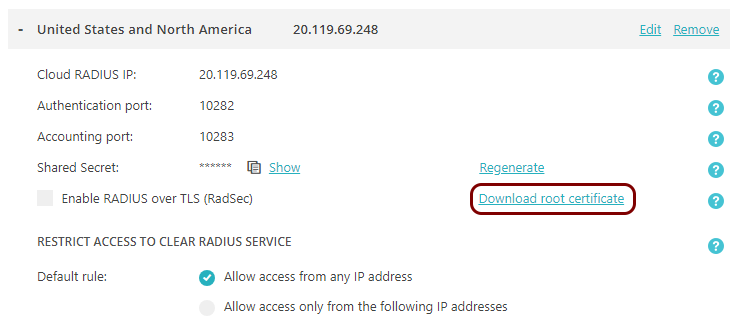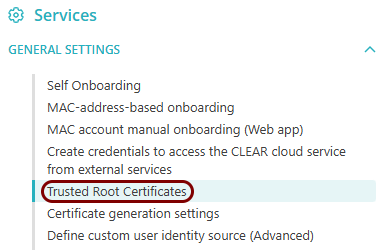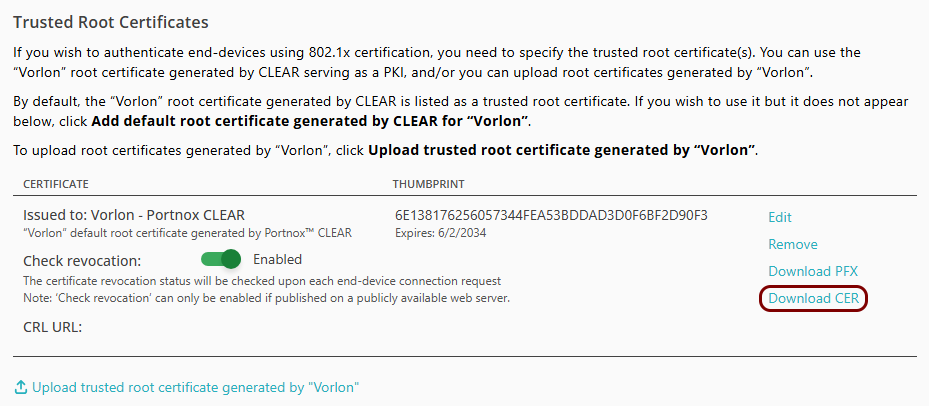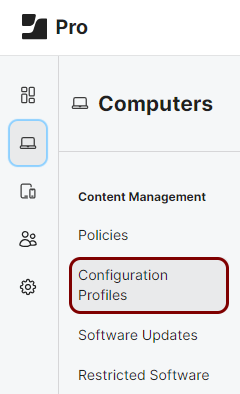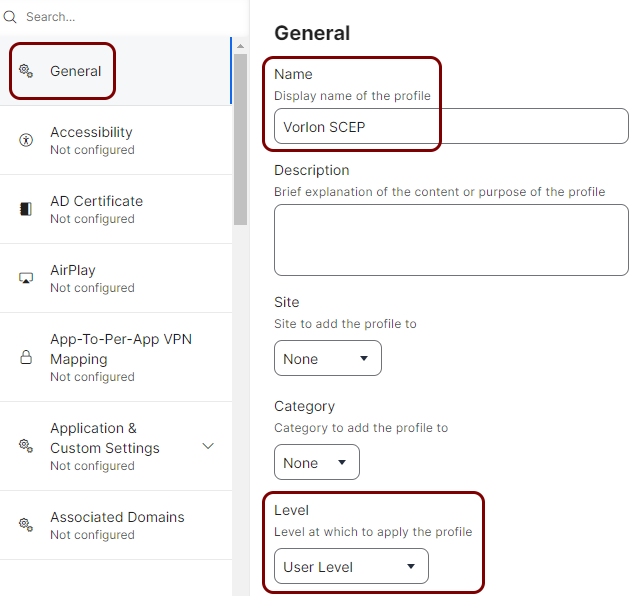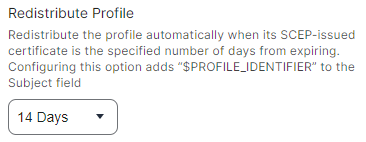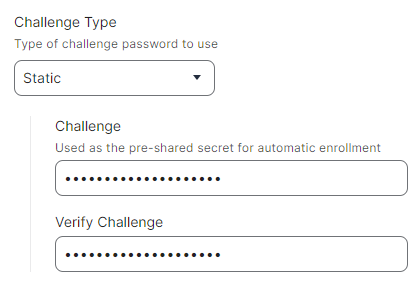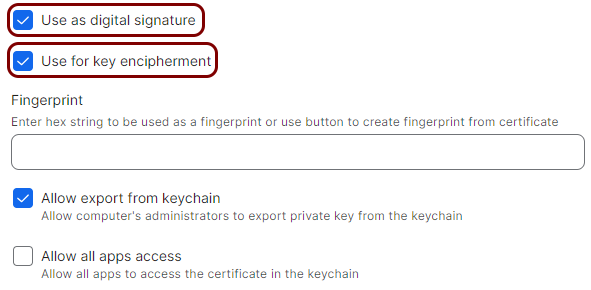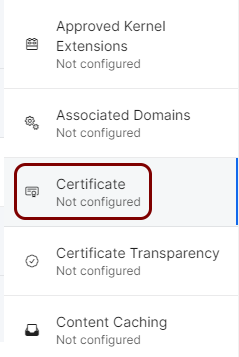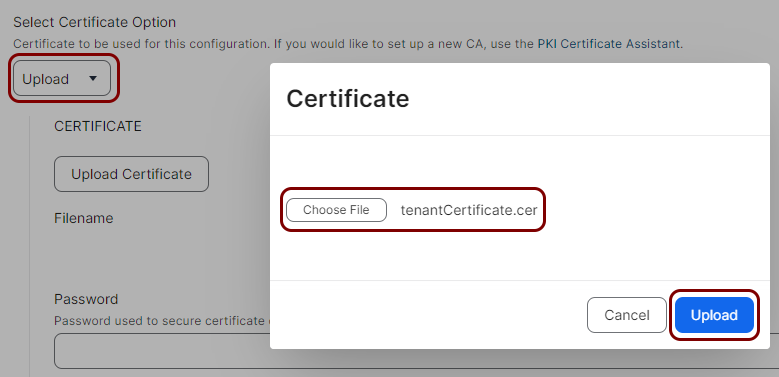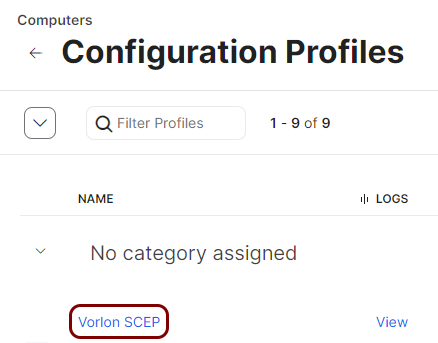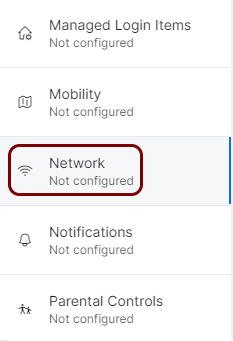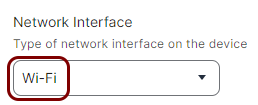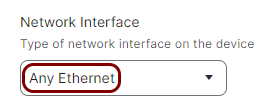Onboard macOS devices with certificates using Jamf and SCEP
In this topic, you will learn how to deploy Portnox™ Cloud certificates via Jamf and SCEP to manage macOS devices.
Turn on the Portnox Cloud SCEP services
In this section, you will configure Portnox™ Cloud to provide SCEP services to your devices.
If you have previously turned on the Portnox Cloud SCEP services, skip to the later step in which you get the Cloud SCEP URL and password.
Portnox Cloud SCEP services let devices contact the Cloud SCEP server and get a unique certificate for the device or for the specific user of the device.
Download the root CA certificate
In this section, you will download the root CA certificate from Portnox™ Cloud, which is needed to create a profile.
Result: The root CA certificate file is in the Downloads folder on the local disk.
Download the tenant CA certificate
In this section, you will download the Portnox™ Cloud tenant CA certificate from the Cloud portal.
You need the tenant CA certificate from Portnox Cloud so that your managed devices can verify the validity of individual SCEP certificates, which are signed using the tenant CA certificate.
Optional: Hand over information from the Portnox Cloud team to the Jamf team
In this section, you will learn what information was collected in previous steps from Portnox Cloud, which is needed to configure Jamf to work with Portnox Cloud.
If different people are responsible for managing Portnox Cloud and Jamf, here is the information you need to hand over:
-
The URL of the Portnox Cloud SCEP server. For example, https://scep.portnox.com/b2973887-1274-45d4-91d0-4a342a861c76.
-
The password for the SCEP server.
-
The root CA certificate file in the X.509 format. For example, rootCertificate.cer.
-
The tenant CA certificate file in the X.509 format. For example, tenantCertificate.cer.
Create a Jamf configuration profile
In this section, you will create a configuration profile in Jamf that lets managed devices get certificates from the Portnox™ Cloud SCEP server.
Configure the profile for Wi-Fi
In this section, you will edit the configuration profile and add a Wi-Fi network configuration. This will let your managed devices access the Wi-Fi network configured in Portnox™ Cloud by using certificates obtained from the Portnox SCEP server.
Configure the profile for Ethernet
In this section, you will edit the configuration profile and add an Ethernet network configuration. This will let your managed devices access the Ethernet network configured in Portnox™ Cloud by using certificates obtained from the Portnox SCEP server.



